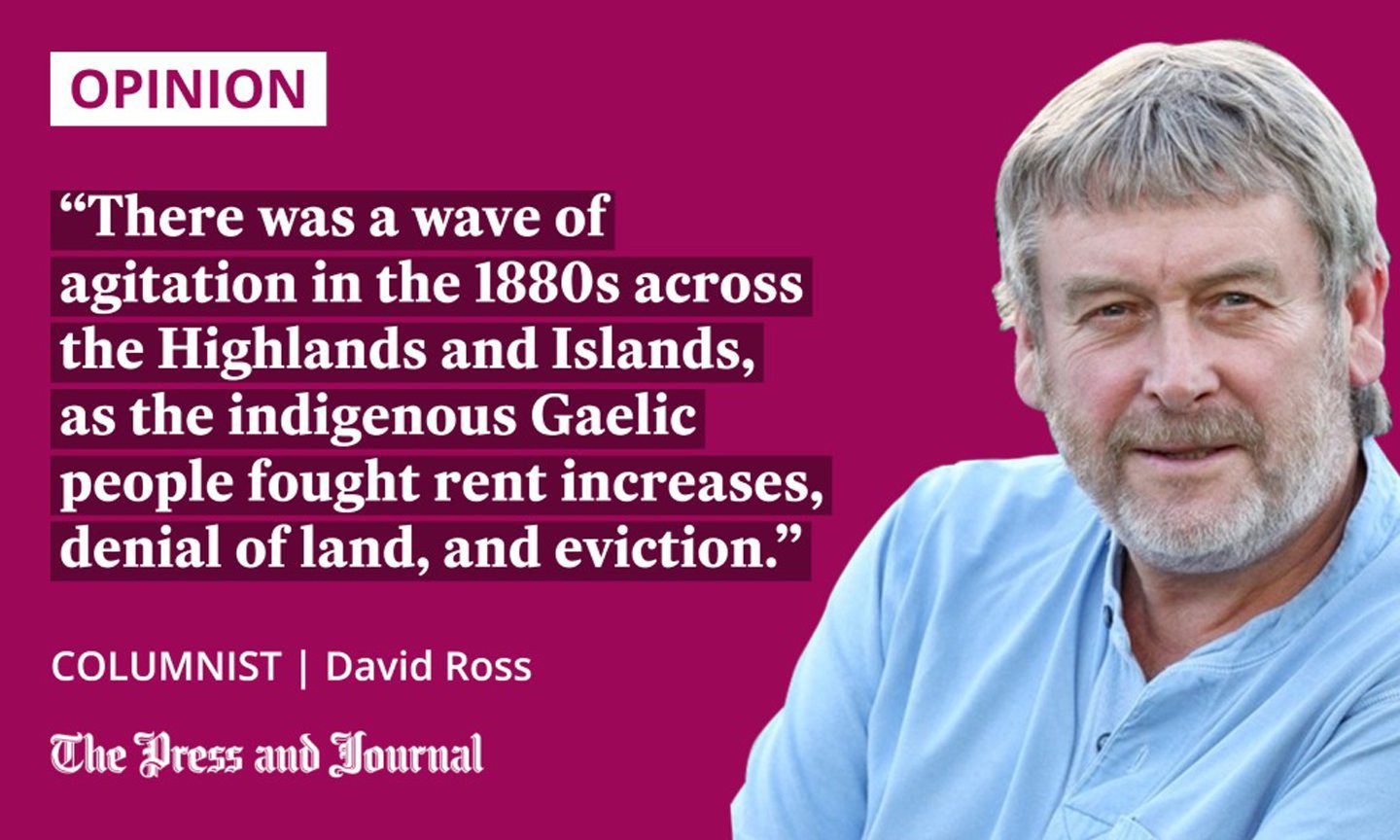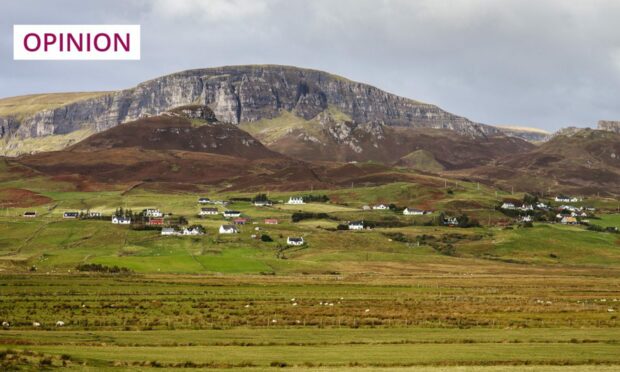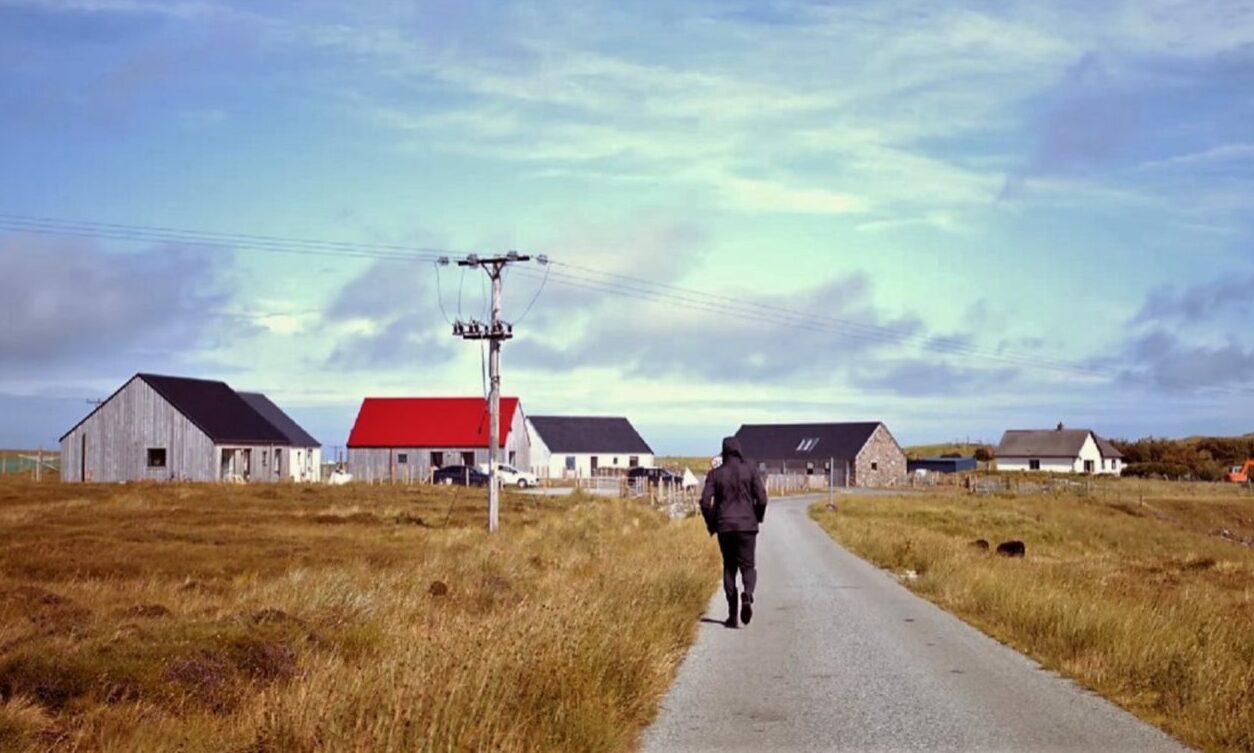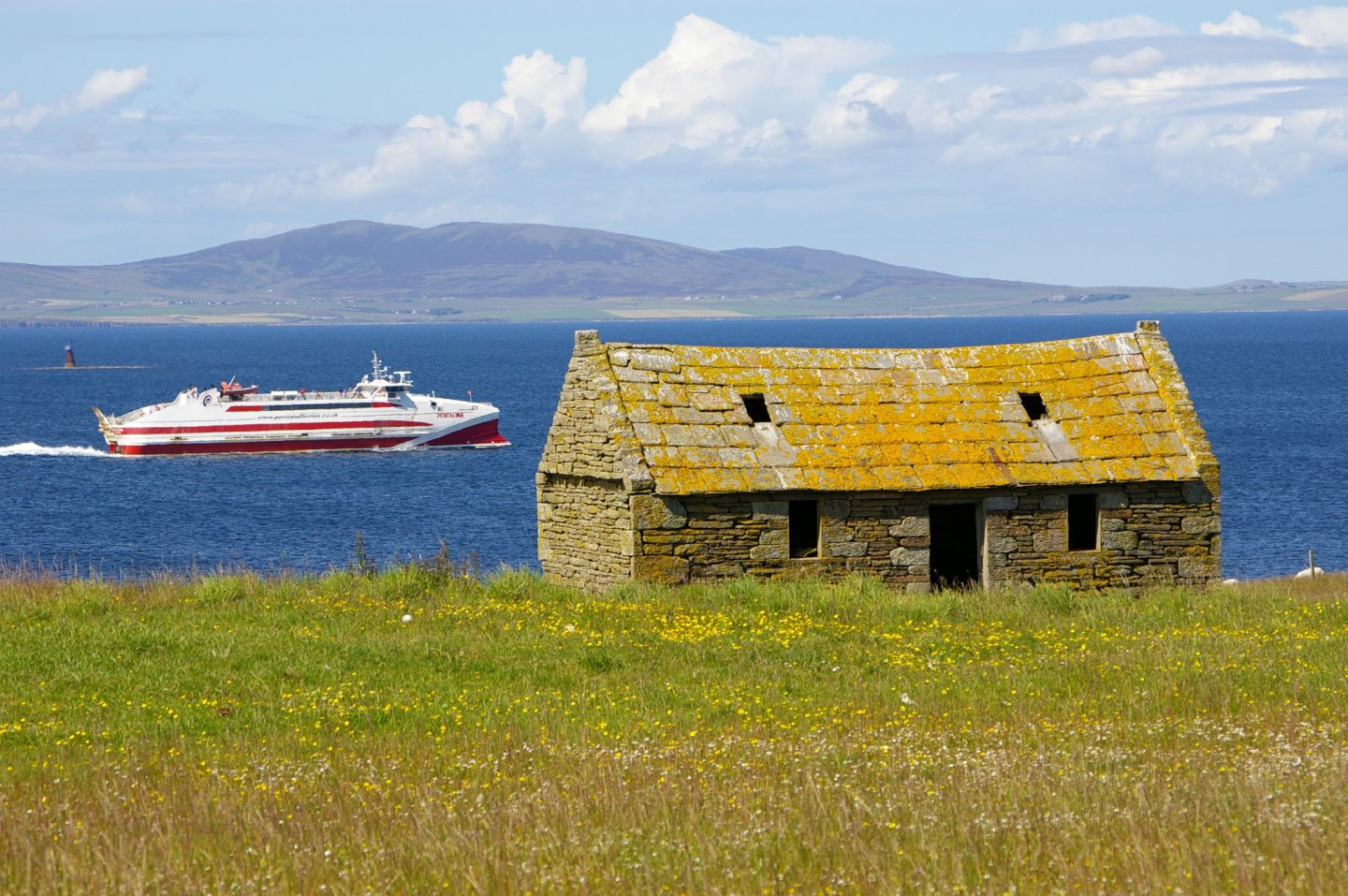More than a century ago, brave Highlands and Islands crofters spoke out to protect their rights. Now the Scottish Government should pay tribute with further land reform, writes David Ross.
The most recent edition of the Staffin Community Trust’s (SCT) newsletter contained information important to that area of north-east Skye, from up-to-date intelligence on the £4 million plan for a new local harbour, to what’s happening at the new, purpose-built £250,000 health centre, constructed by the trust. (The SCT has already built affordable homes, housing six families.)
But, there was also a progress report on another of the trust’s interests: “A long-held ambition – which was suggested at one of the first SCT meetings way back in 1994 – was to properly commemorate the Land Agitations of the late 1800s in Staffin. And that desire to mark the lasting impact our forebears had on the community – and the land we live on today – is finally about to be realised.

“Preliminary works are due to begin at the Kilt Rock for the construction of Sùil nam Bràthan, which will look like a cottar’s cottage from that period of time.”
Kilt Rock had been chosen “as it was frequently used as a clandestine meeting point by the embattled crofters to avoid accusations being levelled against any one individual or family.” Their direct descendants are involved.
Skye played a crucial role in 1880s protests
This speaks of the wave of agitation in the 1880s across the Highlands and Islands, as the indigenous Gaelic people fought rent increases, denial of land, and eviction. In this Highland Land War, they faced the police, marines and some even Royal Naval gunships.
Skye was crucial. In 1882, the people of the Braes area famously rose up against Lord Macdonald’s withdrawal of grazing rights on a hill called Ben Lee, due to be taken over by a farmer.
They refused to pay their rents. They resisted attempts to evict 12 crofters as part of the dispute. A crowd of 150 assaulted the sheriff’s officer when he brought eviction notices, and attacked a force of 50 policemen sent from Glasgow to arrest the crofters.
Things had already been hotting up in the Staffin area. Indeed, the first crofters to resort to direct action were in the township of Valtos (Bhaltos) on the Kilmuir estate.
In 1881, they gave notice to their landlord that they would not pay rent increases. They had watched events in Ireland, where rent strikes, boycotting of landlords and resisting evictions had borne fruit.
Indeed, one of the Valtos crofters’ leaders, Norman Stewart, was nicknamed “Parnell”, after the Irish political leader Charles Stewart Parnell, who was prominent in the Irish land war.
Norman ‘Parnell’ Stewart’s striking moral victory
Stewart is remembered in the first of the three extraordinary volumes of The Great Book of Skye, which records the lives of those who have been part of the island’s story. He had already been in prison “for taking heather and rushes to re-thatch his cottage…” He was to go back for his role as an agitator.
Resulting legislation in 1886 granted crofters security of tenure and fair rents amongst other rights
Hundreds of crofters and their families were involved, but the Sheriff of Inverness-shire had identified Staffin’s Parnell as a troublemaker. And Sheriff William Ivory was determined to crush the crofters’ agitation.
He described Stewart in a report to the Lord Advocate as the “leading ringleader of the mob”. It was published in The Scotsman newspaper, before Stewart stood trial. The crofter successfully sued the Sheriff for defamation.
Parliamentary Hansard recorded the legal costs as “amounting to £200.” The Great Book of Skye describes the award of £25 damages to Stewart as “the most striking moral victory of the entire crofters’ land struggle.”
Prime Minister Gladstone’s government established the Napier Commission, “to inquire into the condition of the crofters and cottars in the Highlands and Islands of Scotland”. Resulting legislation in 1886 granted crofters security of tenure and fair rents amongst other rights. It was far from perfect, but was the foundation of the crofting system that survives.
New land ownership laws would honour those who came before
Today, 136 years on, the issue of land still divides. Parliamentarians, yet again, are trying to come up with appropriate legislation.
The Scottish Government has been consulting about what land reform measures would help in the fight against climate change. Ministers promise the resulting bill will be ambitious. “It will address long-standing concerns about the highly concentrated pattern of land ownership in rural areas of Scotland.”
A public interest test (PIT) would apply to all large-scale land transactions, to assess whether they would risk “the creation or continuation of a situation in which excessive power acts against the public interest.”
One of those being consulted is the Scottish Crofting Federation (SCF). As crofters’ representative body, its members are the heirs to the legacy of the Highland Land War.
The SCF proposes the creation of new crofts across Scotland, as was originally envisaged, and that any landowner failing the PIT should be compelled to create a number of crofts.
That would be a fitting memorial to the likes of Norman Stewart, and all the men and women who rose up across the Highlands and Islands.
David Ross is a veteran Highland journalist and author of an acclaimed book about his three decades of reporting on the region



Conversation